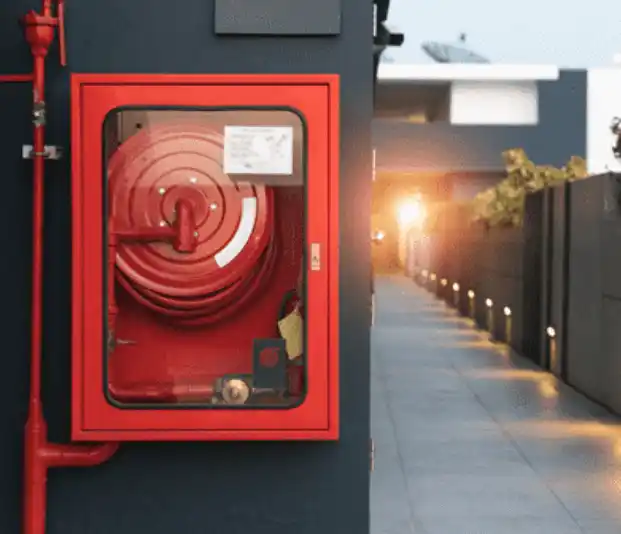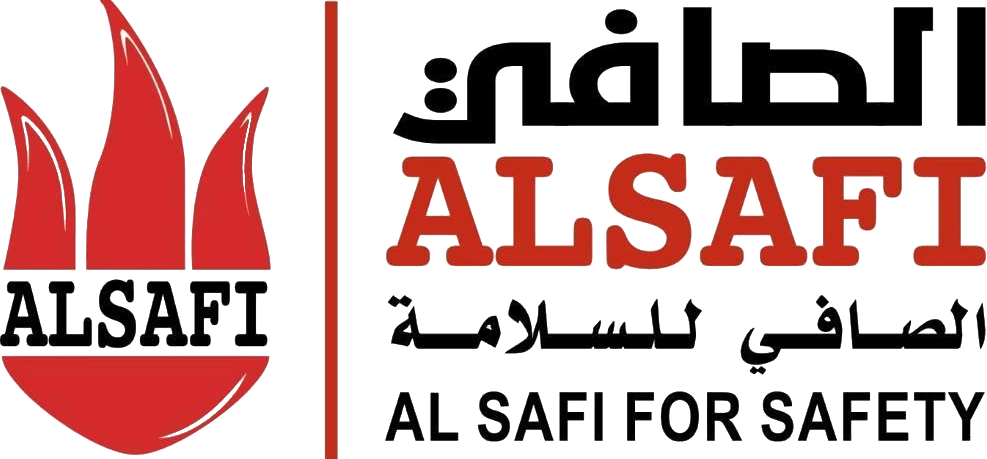Fire boxes: How to use them in emergency situations

Fire hose cabinets are important tools that help control fires quickly before they spread, making them a key part of safety and security systems in homes and buildings. Multiple types are available to suit different needs, and they typically contain equipment such as water hoses and fire extinguishers.
In this article, we’ll look at the different types, how to use them, and key tips for choosing the right cabinet to protect lives and property.
What are fire hose cabinets?
Fire hose cabinets are metal or plastic containers specifically designed to store essential firefighting equipment such as water hoses, extinguishers, nozzles, and the fittings required to connect to water.
These cabinets are placed in strategic locations within buildings to ensure easy access during emergencies. They are a fundamental element of safety and security systems due to their role in reducing fire losses and meeting Civil Defense safety standards in Saudi Arabia.
Components of fire hose cabinets
Fire hose cabinets contain the tools needed to tackle fires efficiently and quickly, combining multiple provisions to control a fire before it escalates. Their components include:
- Water hoses: used to deliver water directly to the fire’s origin, helping extinguish it quickly.
- Nozzles: allow precise control of water flow during firefighting.
- Fire extinguishers: dedicated to dealing with small fires and preventing their spread.
- Couplings/fittings: connect the cabinet to the central firefighting network to ensure continuous water flow.
Types of fire hose cabinets
Fire hose cabinets vary by design, contents, and intended use, making them suitable for different facilities and fire scenarios. Key types include:
-
Wall-mounted cabinets:
Designed to be fixed to walls in accessible areas such as building entrances and common corridors. They are often used in offices and small residential buildings due to their compact size and ease of use.
They’re equipped with short hoses or extinguishers to cover emergency needs in tight spaces—ideal for rapid response to limited fires.
-
Integrated cabinets:
Suitable for large facilities such as factories and hospitals. These cabinets house all required firefighting devices in one unit (hoses, extinguishers, and fittings).
The integrated design reduces the time needed to reach equipment during emergencies and improves readiness for coordinated responses in large sites.
-
Mobile cabinets:
Built for mobility, making them ideal for open areas or temporary job sites such as construction zones or industrial areas.
They come with wheels and lightweight tools to ease movement between locations, enabling rapid response where fixed cabinets are impractical.
-
Long-hose cabinets:
Engineered to cover wide areas thanks to long hoses connected to a strong water source. Common in warehouses, large malls, and industrial buildings.
They’re ideal for tackling larger fires, especially those involving solid materials like wood or paper.
-
Extinguisher cabinets:
These house multiple types of extinguishers to suit different classes of fire, such as those from oils/flammable liquids and electrical fires.
Common in offices, homes, and public facilities, they provide a quick and safe means to extinguish small fires before they spread.
-
Heat-resistant cabinets:
Manufactured from materials that withstand high temperatures, making them ideal for factories and industrial sites exposed to harsh conditions.
They protect the equipment inside from heat damage, allowing safe use even in demanding environments.
-
Emergency equipment cabinets:
Designed to be more comprehensive, including additional tools such as fire axes for forced entry, emergency lights for power outages, and breathing apparatus for smoke-heavy environments.
Used in facilities that require advanced gear for complex incidents, such as power plants or large hospitals.
Why fire cabinets matter in facilities
Having fire hose cabinets on site delivers several benefits:
- Rapid protection: ready-to-use tools to suppress fires as soon as they start.
- Damage reduction: immediate use helps limit both material and human losses.
- Compliance: a core requirement of Civil Defense safety standards.
- Protection of staff and visitors: supports everyone’s safety during emergencies.
- Safety awareness: promotes adherence to safety standards inside facilities.
Where fire hose cabinets are used
Fire hose cabinets play a vital role in safety and fire protection and are widely used in:
- Residential buildings: provide needed protection for occupants during emergencies, enhancing peace of mind at home.
- Factories: essential for fires stemming from heavy machinery or chemical leaks.
- Hospitals: protect patients and sensitive medical equipment, ensuring continuity of care.
- Shopping centers: deliver effective safety measures for shoppers and staff in crowded spaces.
- Schools and universities: ensure a safe environment for students and staff with swift intervention when needed.
Fire cabinet prices
Prices vary by type, size, and specifications to meet each facility’s needs. Generally, prices start around 500 SAR for small wall-mounted cabinets and can reach 3,000 SAR or more for large or integrated cabinets with advanced features such as long hoses or heat-resistant materials.
Al-Safi safety tools offers Civil-Defense-approved fire cabinets at competitive prices with multiple options for all facilities—making it an ideal choice when purchasing fire cabinets.
How to choose the right fire cabinet
Selecting the ideal fire cabinet requires considering several factors to ensure effectiveness in emergencies, including:
- Facility size and use: needs differ by size and activity—homes need simpler setups than factories or malls.
- Likely fire types: understanding expected fire risks (electrical, flammable liquids, etc.) helps choose suitable equipment.
- Compliance with official standards: make sure the cabinet meets standards from relevant authorities to ensure quality and performance.
- Installation location: choose easily accessible sites (main corridors or near work areas) to speed up emergency response.
Routine maintenance procedures
Regular maintenance is essential to keep cabinets ready and effective. Core procedures include:
- Inspecting hose and valve condition to ensure they’re leak-free and operational.
- Checking extinguisher validity so all units are serviceable and within their expiry period.
- Verifying cabinet placement and anchoring so it remains in the designated spot with easy access during emergencies.
In short, fire hose cabinets are the first line of defense against fires, providing essential tools that reduce losses and protect lives and property.
Read also: Maintenance contracts
Choosing the right cabinet—along with regular maintenance—ensures the highest levels of safety. Don’t hesitate to invest in high-quality, certified fire cabinets to secure your facility and keep everyone safe.



